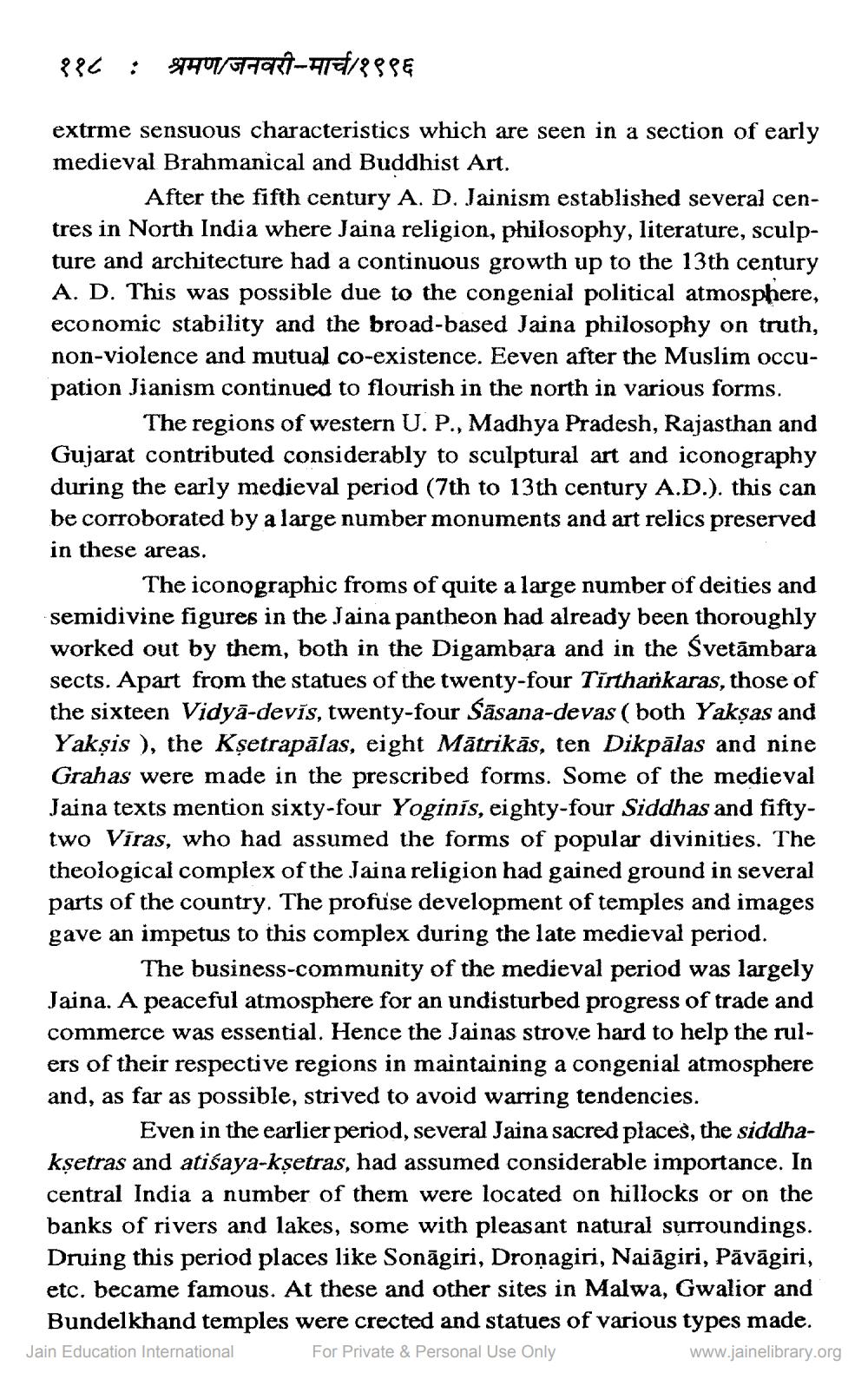________________
११८ : श्रमण/जनवरी-मार्च/१९९६
extrme sensuous characteristics which are seen in a section of early medieval Brahmanical and Buddhist Art.
After the fifth century A. D. Jainism established several centres in North India where Jaina religion, philosophy, literature, sculpture and architecture had a continuous growth up to the 13th century A. D. This was possible due to the congenial political atmosphere, economic stability and the broad-based Jaina philosophy on truth, non-violence and mutual co-existence. Eeven after the Muslim occupation Jianism continued to flourish in the north in various forms.
The regions of western U. P., Madhya Pradesh, Rajasthan and Gujarat contributed considerably to sculptural art and iconography during the early medieval period (7th to 13th century A.D.). this can be corroborated by a large number monuments and art relics preserved in these areas.
The iconographic froms of quite a large number of deities and semidivine figures in the Jaina pantheon had already been thoroughly worked out by them, both in the Digambara and in the Svetāmbara sects. Apart from the statues of the twenty-four Tirtharikaras, those of the sixteen Vidyā-devis, twenty-four Sāsana-devas (both Yaksas and Yakṣis ), the Kșetrapālas, eight Mātrikās, ten Dikpālas and nine Grahas were made in the prescribed forms. Some of the medieval Jaina texts mention sixty-four Yoginís, eighty-four Siddhas and fiftytwo Viras, who had assumed the forms of popular divinities. The theological complex of the Jaina religion had gained ground in several parts of the country. The profuse development of temples and images gave an impetus to this complex during the late medieval period.
The business-community of the medieval period was largely Jaina. A peaceful atmosphere for an undisturbed progress of trade and commerce was essential. Hence the Jainas strove hard to help the rulers of their respective regions in maintaining a congenial atmosphere and, as far as possible, strived to avoid warring tendencies.
Even in the earlier period, several Jaina sacred places, the siddhakşetras and atiśaya-kşetras, had assumed considerable importance. In central India a number of them were located on hillocks or on the banks of rivers and lakes, some with pleasant natural surroundings. Druing this period places like Sonāgiri, Dronagiri, Naiāgiri, Pāvāgiri, etc. became famous. At these and other sites in Malwa, Gwalior and Bundelkhand temples were crected and statues of various types made. Jain Education International For Private & Personal Use Only
www.jainelibrary.org




